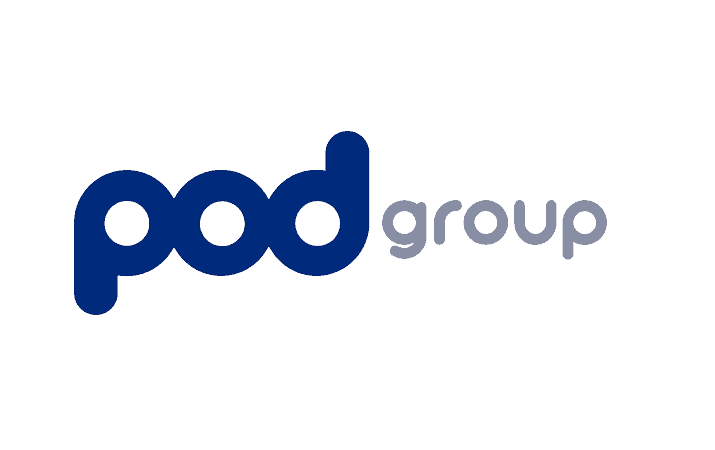In our 5 minutes with profiles, MEF members talk about their business, their aspirations for the future and the wider mobile industry. This week, CEO Sam Colley introduces IoT connectivity specialists and new MEF Member Pod Group.
What does Pod Group do?
Pod Group is an MVNO that offers reliable, global IoT connectivity, along with connectivity management and analytics, a subscription-based billing engine and IoT-specific network security solutions. We’ve developed our own modular, easy-to-use IoT platform, Pod IoT Suite. Pod IoT Suite brings everything needed to deploy, manage and scale your IoT application into one user-friendly platform.
When did Pod Group launch and what growth have you seen?
Pod Group began in 1999. Since then we’ve built up strong relationships with MNOs around the world in order to offer our customers resilient, global connectivity on 600+ networks in 185 countries. Over time we have broadened our scope and we now offer other IoT solutions such as connectivity management, billing, network security and innovative SIM apps. Through speaking with our customers we’ve learned which products and solutions would be most useful to them and focused our developments on these areas.
What are your main goals?
We go beyond the traditional concept of IoT connectivity to bring in the other areas that need addressing right from the start of the deployment. These are the areas that generally get left until the last minute or even addressed after deployment and therefore tend to cause problems in the field. We offer customized SIM apps to give our customers greater control over their connectivity and increased reliability.
We offer a broad range of network-based security services which enable our customers to secure their IoT devices, even those which cannot support a firewall or anti-malware.
We want to provide our customers with unbiased IoT connectivity advice. We’re an agnostic connectivity provider. This means that we recommend the connectivity that is the best fit for our customers’ IoT applications and don’t give preference to any one type of connectivity. Our in-house experts provide impartial advice on connectivity options and help our customers to solve any connectivity issues they may come across whilst developing and deploying their IoT solution.

Where do you see Pod Group in three years’ time?
In three years’ time we expect that there will be a significant amount of additional IoT devices online. Many of them will unfortunately not be able to support adequate security solutions on the device itself. We want to ensure that these devices are secure, by deploying our network security monitoring solution, Pod Protect plus our direct interconnect service, Pod Connect which is an integral part of the mobile network core we are currently developing.
By this time, 5G will be widely deployed and 4G LTE networks will start to be sunsetted. We want to help ensure our customers can future proof their IoT devices and that, even as networks are sunsetted, they can stay connected. We predict that eSIMs will be an important part of future-proofing IoT deployments.
We serve the whole world and have offices in Europe, North America, Asia, and Central America. We plan to expand our global footprint into Latin America and further throughout Asia, the Middle East and Africa.
What aspect of mobile is most exciting to you right now?
Now that the technical basis for eUICC has been described by the GSMA, development of eSIMs can progress. Embedded SIMs (or eSIMs) are a type of SIM that can be embedded into a device at the manufacturing stage and provisioned with multiple SIM profiles on the same chip.
Updates can be made Over The Air, without ever needing to remove the SIM from the device. This means that your device’s connectivity is future-proofed and there’s no need to worry about networks being sunsetted or sudden price changes from your MNO. One slight problem is that not all IoT applications are compatible with this technology. Our Research and Innovation team has developed a testing service so that our customers can check whether their IoT devices are able to accept eSIMs.
What’s the most critical issue that will hit mobile within the next 12 months?
The sunsetting of 2G and 3G networks will continue to catch people unawares, added to which, the deployment of the technologies that will replace these networks (e.g. NB-IoT and Cat-M) is currently insufficient which is complicating the issue. It’s important to put in place solid long term plans for IoT deployments. A technology that’s cutting edge today can become obsolete in just a few short years.
That’s why it is so important that businesses put in place comprehensive plans for ensuring their IoT device can stay connected, even if networks are sunsetted. It’s also key that they have a plan to keep up to date with software updates (especially security patches).
Apart from your own, which mobile companies are the ones to watch in the year Ahead?
It will be interesting to see how Sigfox and LoRa continue to evolve alongside cellular LPWAN technology and how their strategy will develop in different markets. They offer low power, wide-area network (LPWAN) connectivity. As the sector matures and IoT use cases diversify, people are beginning to see that there is no ‘one size fits all’ answer to which type of connectivity is best. It’s all down to individual use cases. For some IoT applications it will be non-cellular LPWAN, others will need multi-network cellular connections.
As an agnostic provider of IoT connectivity we always recommend the connectivity that is best for our customers. We’re not tied to any particular technology so we are happy to make recommendations based on what is best for our customers, not on what we’re being pushed to sell.






